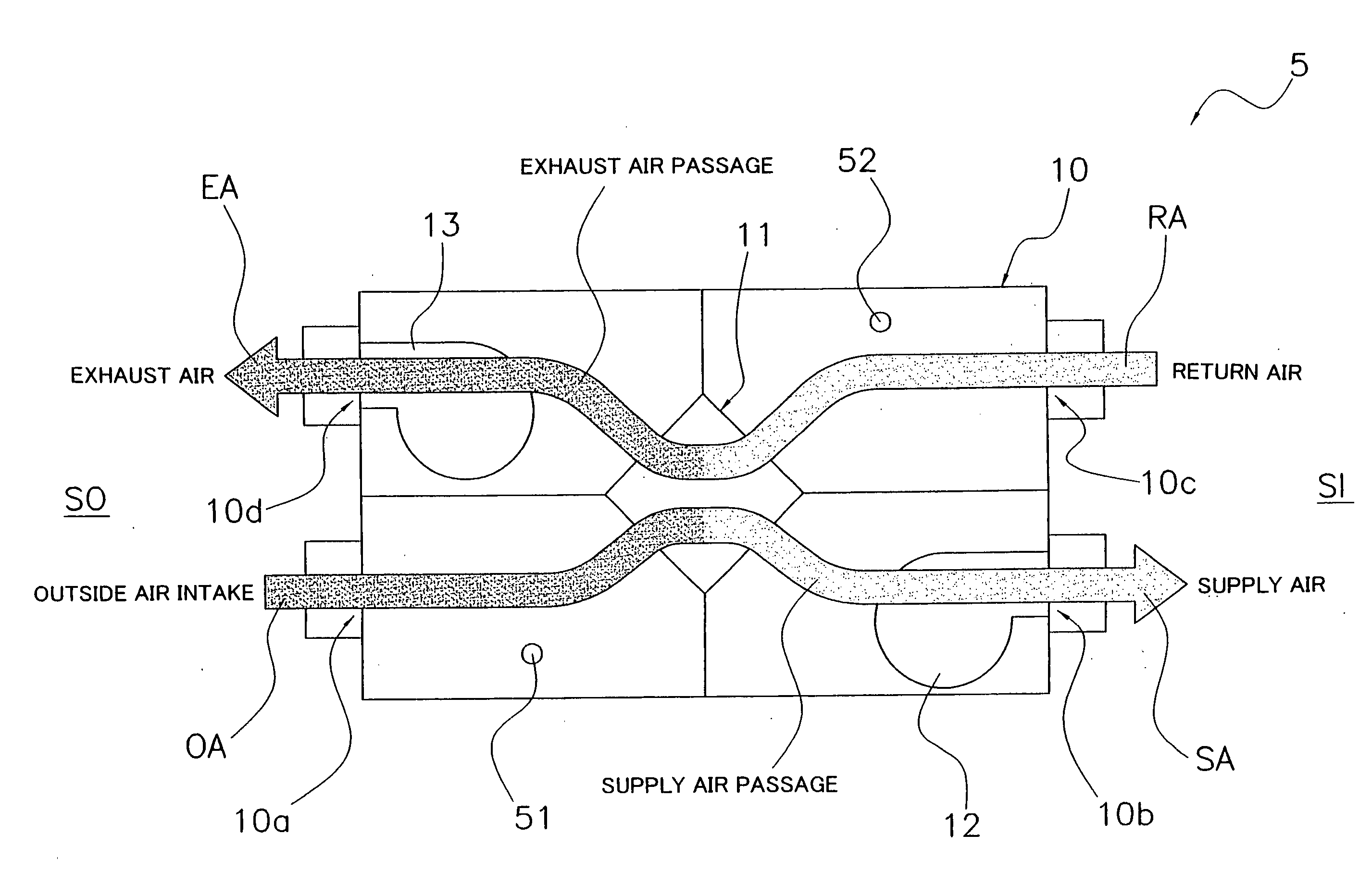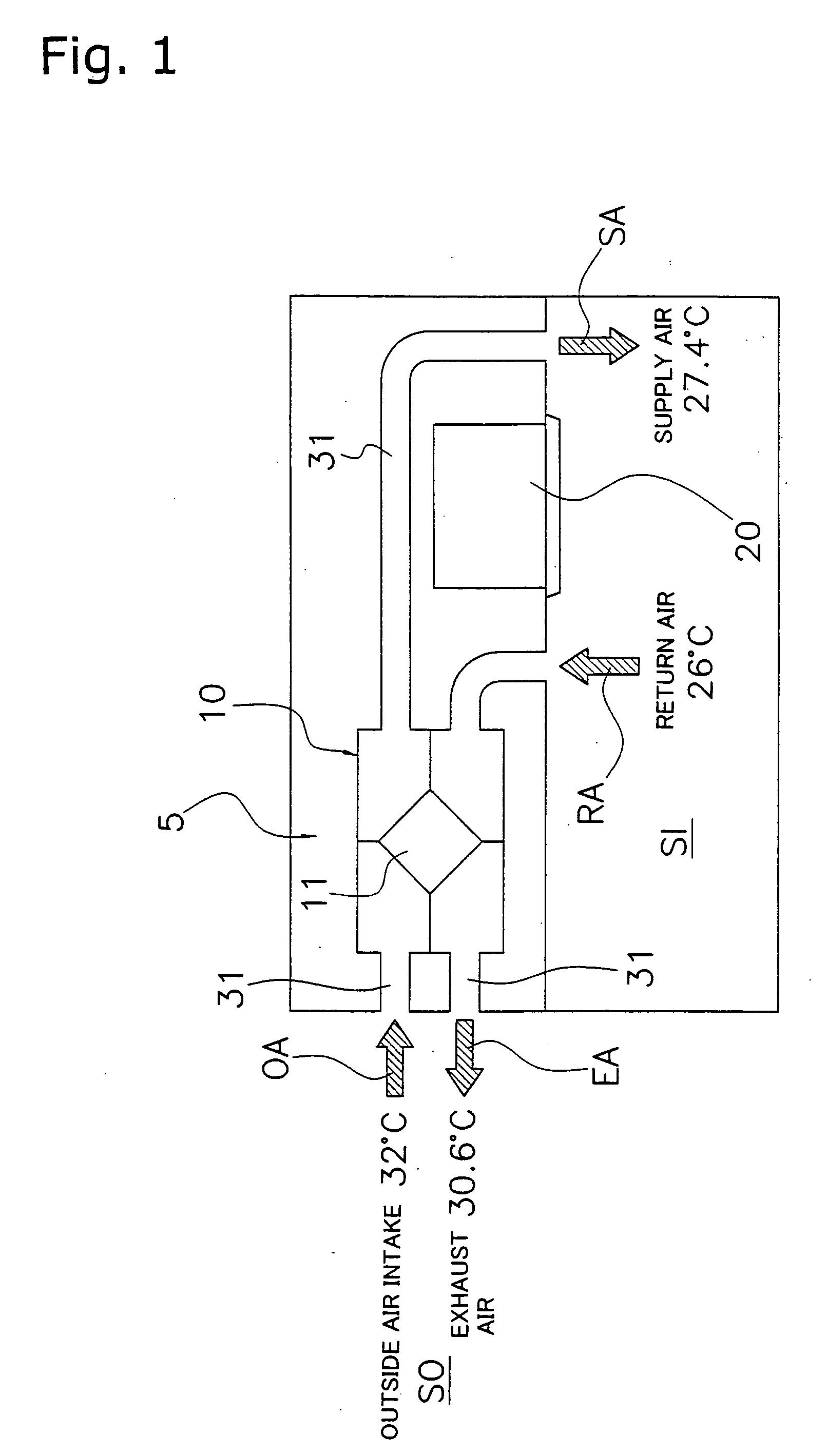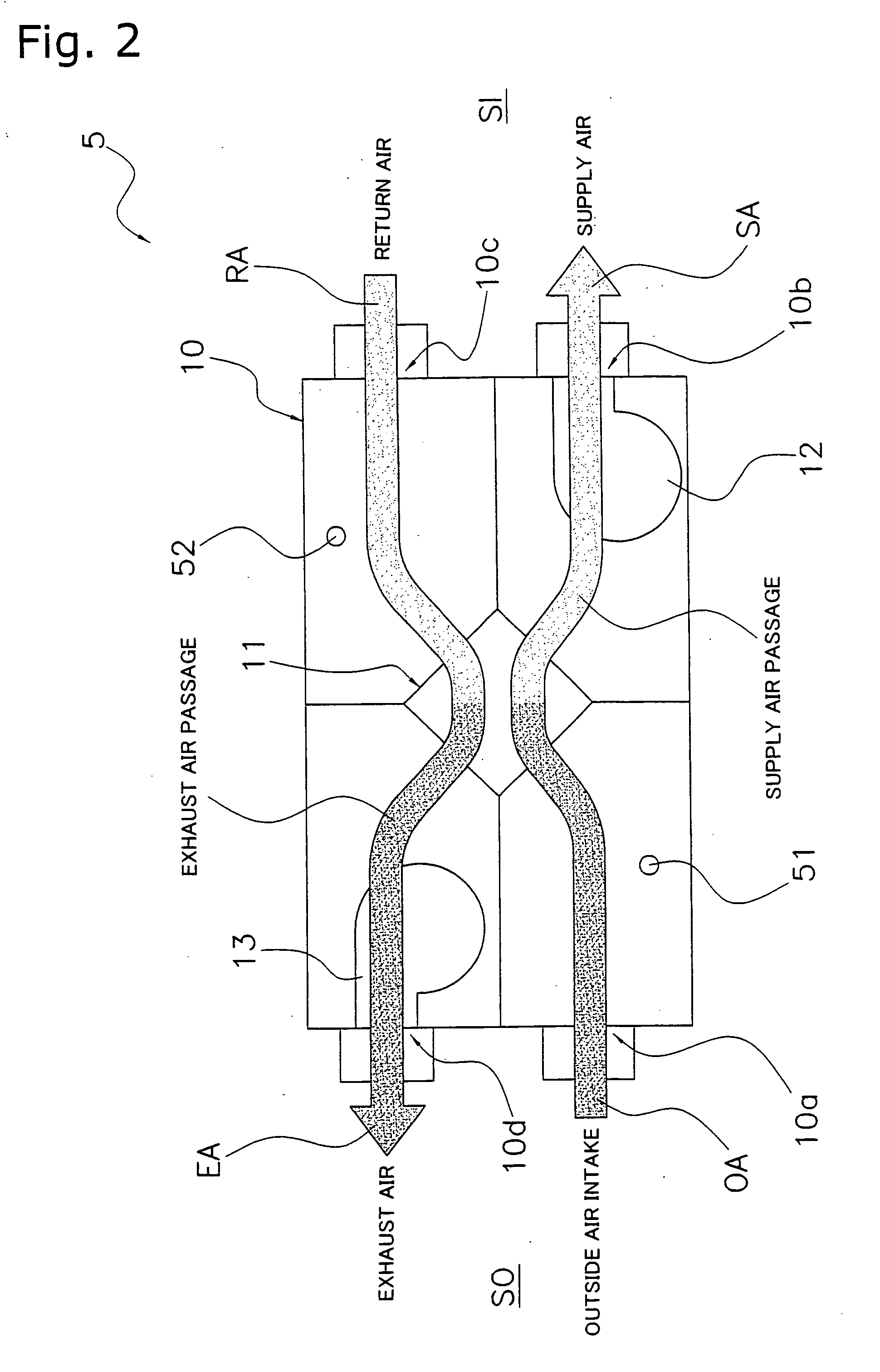Heat exchanger unit
a heat exchanger and unit technology, applied in the field of heat exchanger units, can solve the problems of condensation water at the heat exchange element, dew condensation inside the unit, and inability to completely inhibit the freezing of the heat exchange elemen
- Summary
- Abstract
- Description
- Claims
- Application Information
AI Technical Summary
Problems solved by technology
Method used
Image
Examples
first embodiment
[0037] First Embodiment
[0038] The heat exchanger unit 5 according to one embodiment of the present invention is linked to an air conditioner 20 or operates independently, and is installed in order to ventilate buildings and various facilities. As shown in FIG. 1, the heat exchanger unit 5 according to the present embodiment is installed in places like above the ceiling of an indoor space SI that is to be ventilated inside a building, and the duct 31 links the indoor space SI to the outdoor space SO outside the building. The heat exchanger unit 5 exchanges heat between the return air RA from the indoor space SI and the outside air OA by the heat exchange element 11, discharges the return air RA to the outdoor space SO (exhaust air EA), and then delivers post heat-exchanged outside air OA into the indoor space SI as supply air SA. In addition to this type of heat exchange and ventilation operation, the heat exchanger unit 5 can also perform the usual ordinary ventilation operation by ...
second embodiment
[0070] Second Embodiment
[0071] To provide a significantly different degree of inhibiting freezing of heat exchange element 11 between the first operational mode in the first freeze inhibit control mode and the second operational mode in the second freeze inhibit control mode in the above first embodiment, the first operational mode temporarily halts just the supply air fan 12, whereas the second operational mode temporarily halts both the supply air fan 12 and the exhaust air fan 13.
[0072] However, a case is also conceivable wherein, depending on the low-temperature resistance of the heat exchange element 11 and the ability of the air conditioner 20 to warm the indoor space SI, the abovementioned powerful second operational mode is not needed. In such a case, it is also possible to set the following type of first freeze inhibit control mode and second freeze inhibit control mode.
[0073] In the second embodiment, just the supply air fan 12 is temporarily stopped for a predetermined pe...
third embodiment
[0074] Third Embodiment
[0075] In the abovementioned first embodiment, the start and cancellation of the first freeze inhibit control mode and the second freeze inhibit control mode are judged based only on the temperature detected by the temperature sensor 51, which detects the outside air temperature; however, that judgment may also be made taking into consideration the conditions of the temperature detected by the temperature sensor 52, which detects the indoor temperature. In this case, the risk of freezing of the heat exchange element 11 can be more accurately estimated, making it possible to more appropriately time the start and cancellation of the first freeze inhibit control mode and the second freeze inhibit control mode.
PUM
 Login to View More
Login to View More Abstract
Description
Claims
Application Information
 Login to View More
Login to View More - R&D
- Intellectual Property
- Life Sciences
- Materials
- Tech Scout
- Unparalleled Data Quality
- Higher Quality Content
- 60% Fewer Hallucinations
Browse by: Latest US Patents, China's latest patents, Technical Efficacy Thesaurus, Application Domain, Technology Topic, Popular Technical Reports.
© 2025 PatSnap. All rights reserved.Legal|Privacy policy|Modern Slavery Act Transparency Statement|Sitemap|About US| Contact US: help@patsnap.com



